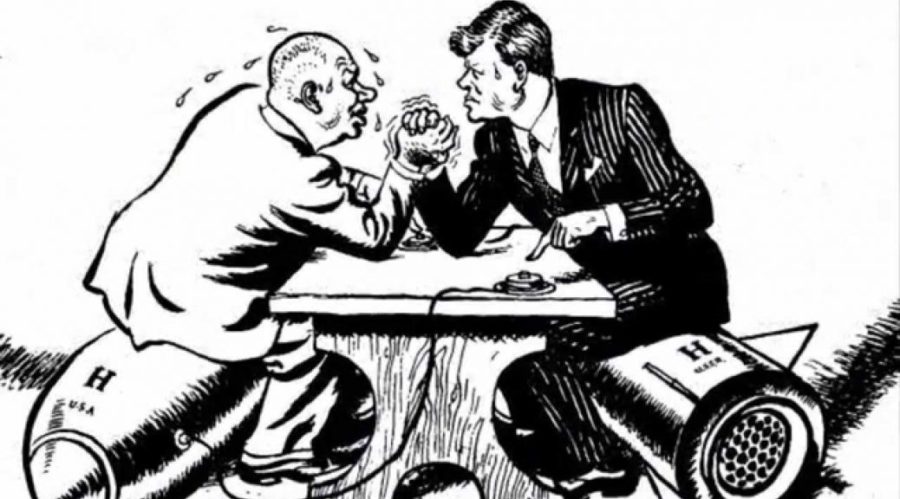The US and Russia; Rivals for Half a Century
A Today in History for October 15 about the Cuban Missile crisis.
November 20, 2018
In a televised speech of extraordinary gravity, President John F. Kennedy announced that U.S. spy planes have discovered Soviet missile bases in Cuba. These missile sites—under construction but nearing completion—housed medium-range missiles capable of striking a number of major cities in the United States, including Washington, D.C. Kennedy announced that he was ordering a naval “quarantine” of Cuba to prevent Soviet ships from transporting any more offensive weapons to the island and explained that the United States would not tolerate the existence of the missile sites currently in place. The president made it clear that America would not stop short of military action to end what he called a “clandestine, reckless, and provocative threat to world peace.”
What is known as the Cuban Missile Crisis actually began on October 15, 1962—the day that U.S. intelligence personnel analyzing U-2 spy plane data discovered that the Soviets were building medium-range missile sites in Cuba. The next day, President Kennedy secretly convened an emergency meeting of his senior military, political, and diplomatic advisers to discuss the ominous development. The group became known as ExCom, short for Executive Committee. After rejecting a surgical air strike against the missile sites, ExCom decided on a naval quarantine and a demand that the bases be dismantled and missiles removed. On the night of October 22, Kennedy went on national television to announce his decision. During the next six days, the crisis escalated to a breaking point as the world tottered on the brink of nuclear war between the two superpowers.
Fortunately, the Russians did not press the issue further, preventing the outbreak of nuclear war. Between both the United States and Russia, which would have spelt the end of the world as we know it.


